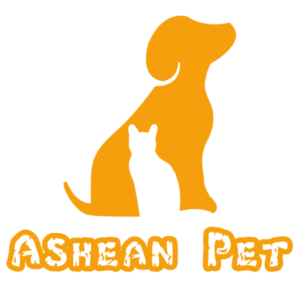Dogs are natural-born chewers. From the moment they're puppies, dogs use their mouths as a sense organ to experience the world around them. Chewing serves several purposes: it relieves teething discomfort for the young pups, keeps their jaws strong, and prevents plaque and tartar from forming on their teeth. You’ll often find adult dogs chewing to relieve stress or boredom, so you’ll see them gnawing on the toy they love best or your shoes. This kind of action is deep-seated in their ancestry. Primitive dogs crush bones to extract the nutritious marrow and keep their teeth clean and sharp.
It is necessary to be aware of this instinctive engagement as far as the owners of dogs are concerned. You must take care of your dog’s requirements and prevent the destruction of your stuff by him. By acknowledging that chomping is a natural and must-have activity for dogs, you can offer avenues of relief, such as dog chew toys or bones that can help keep your dog satisfied and healthy. Therefore, this understanding leads to further virtues like patience and sympathy, so you can teach the dog with training and direction on how to avoid undesired behavior without being cruel. At the end of the day, accepting and relieving your dog's instinctive behaviors helps create a stronger connection with your four-legged friend.

Evolutionary Background of Chewing in Dogs
Have you ever thought about how your furry friends’ ancestors were able to negotiate the rough wilderness? This goes back to ancient survival skills, particularly hunting and eating. Create an image of a pack of wolves who are agile and quiet to attack their prey in the moonlit sky. The success of their hunt out in the wild depended on their sharpening of senses, cooperative behaviors, and physical stamina. This hunting expertization wasn't just about brutality; it also possessed an extraordinary synchronization and smartness that was absent in other animals. As prime ancestral hunters, these wolves and wild dogs were absolute masters of patience and accuracy. Hence, they knew when the right time to strike came for an effective hunt.
But there is more to the story than the actual hunting. Once they caught their prey, the real survival skill kicked in mastication. Chewing moves beyond just chewing on food; it becomes a key (albeit not the only one) for the survival of the wolves. A sharp jaw and strong teeth made them munch through the thickest and toughest meat and bones without any trace. Furthermore, active chewing helps them clean their teeth and avoid dental issues that may have affected their capacity to feed. Hence, if you see your dog enjoying it when biting a bone, be aware that the same act is a way of their wild ancestors' ingenuity, which lasts till today. But it is still the small fabric that made it possible for these marvelous animals to live in the wild successfully.
Health Benefits of Chewing for Dogs
1. Dental Health
Chewing is like nature's toothbrush for dogs. When they gnaw on toys or bones, they help remove plaque and tartar buildup on their teeth. This natural cleaning process can prevent bad breath and reduce the risk of periodontal diseases. Plus, strong teeth and gums mean fewer trips to the vet for dental issues—a win for both you and your dog.
2. Mental Stimulation
Have you ever marveled at how content and focused your dog is when chewing on a bone? The main reason is that chewing is the best mental stimulation. It keeps their brains occupied and fights boredom. A lot of chewing can help the dogs exercise mentally and prevent them from being destructive.
3. Stress Relief
Dogs who chew are always at peace. For them, chewing serves the same purpose as the cathartic experience we often have after reading a book or walking. This is especially true during times of stress, such as thunderstorms, fireworks, or meeting new people. A common comfort item for them could be their dog chew toy.
4. Jaw Exercise
Chewing exercises the jaw muscles. Regular chewing is essential for maintaining the strength of these muscles, which regulate the proper functioning of the whole mouth. If your dog has a well-developed jawline, it can savor its meals and chew toys comfortably.
5. Nutritional Benefits
Treats like dental sticks or rawhide are created as chews that are pleasurably savored and as food that is beneficial for your pet's health. The vitamins and minerals in the chews usually provide your dog with general health support. Chewing on the bare bones can provide nutrients such as calcium and phosphorus, which are excellent vitamins for dogs' bones.
6. Weight Management
For dogs who love eating, chewing can be a great way to get their weight back on track. For less caloric intake, the low-calorie chews will keep them busy and satisfied without additional pound gain. It is a crafty means to make them engage in a healthy lifestyle without taking away their obsessive passion for munching.
7. Digestive Health
Chewing helps dogs break down their food more effectively, aiding digestion. When dogs chew thoroughly, it ensures that their food is adequately prepared for the digestive process, reducing the risk of gastrointestinal issues.
8. Bonding Time
Chewing can be a great way to bond with your dog. Whether you're playing tug-of-war with a dog chew toy or simply sitting beside them while they gnaw away, it’s quality time spent together. It’s a simple activity that strengthens your relationship and makes your dog feel loved and secure.
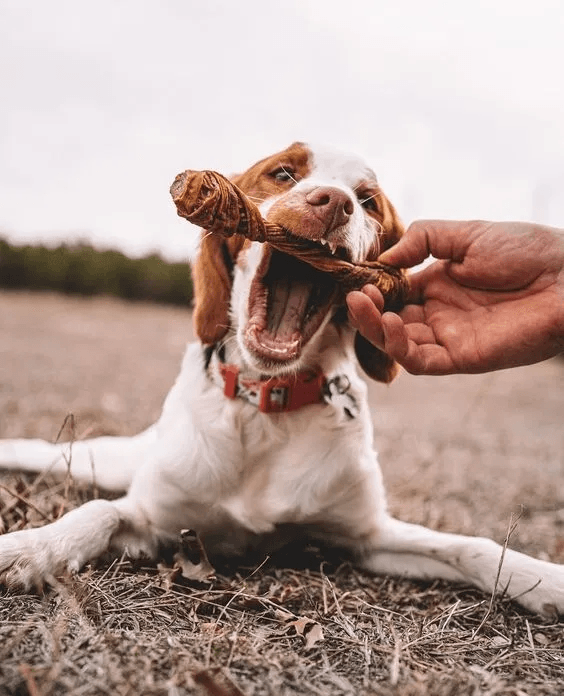
Types of Chews and Their Benefits
1. Rawhide Chews:
These are long-lasting and tough chews made from the inner layer of cow or horse hides.
Benefits:
- Promotes Dental Health: Rawhide chews help remove plaque and tartar buildup on teeth.
- Provides Jaw Exercise: It strengthens jaw muscles.
- Satisfies Natural Chewing Instincts: Dogs inherently need to chew, and rawhide satisfies this instinct.
2. Dental Chews:
These are specially designed chews infused with enzymes to help clean teeth and freshen breath.
Benefits:
- Reduces Bad Breath: Ingredients in dental chews help freshen your dog's breath.
- Prevents Dental Disease: Regular use can reduce the risk of periodontal disease.
- Supports Healthy Gums: Helps maintain overall oral health by reducing plaque and tartar.
3. Rubber Chew Toys:
Durable, bouncy dog chew toys made from safe, non-toxic rubber.
Benefits:
- Great for Teething Puppies: Provides relief for sore gums.
- Mental Stimulation: Keeps dogs engaged and mentally stimulated.
- Durable and Long-Lasting: Ideal for aggressive chewers.
4. Nylon Bones:
These are hard, flavored bones for strong chewers.
Benefits:
- Long-Lasting: Can withstand heavy chewing over time.
- Cleans Teeth: The hard texture helps reduce plaque and tartar.
- Satisfies Chewing Instincts: Provides a safe outlet for natural chewing behavior.
5. Natural Bones:
Real bones, are often sourced from beef or poultry.
Benefits:
- High in Nutrients: Provides calcium and phosphorus essential for bone health.
- Promotes Dental Health: Chewing on bones helps clean teeth.
- Engages Natural Instincts: Mimics the chewing experience of wild canines.
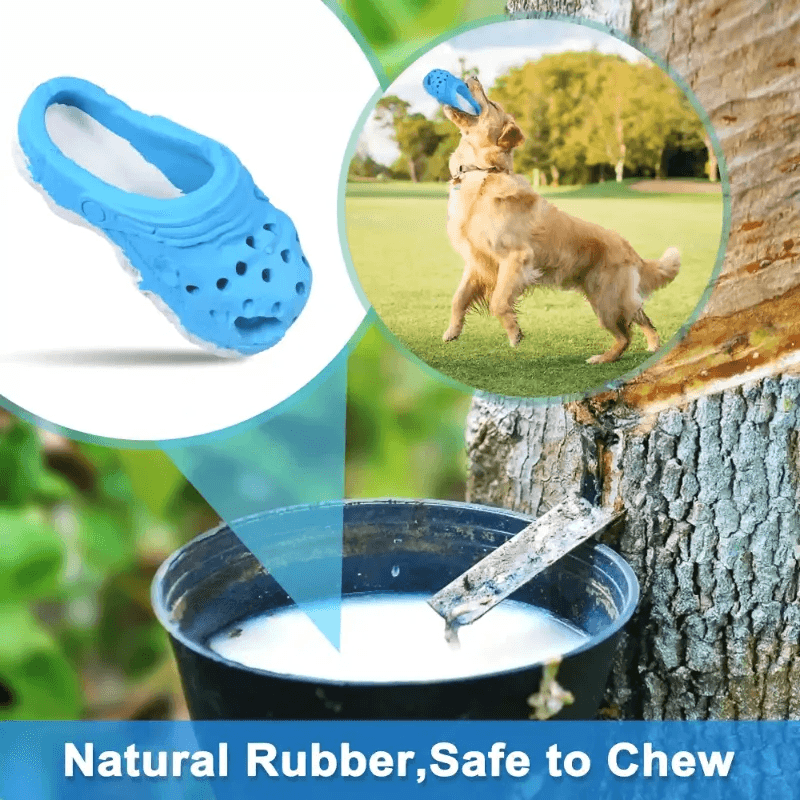
6. Edible Chews:
Made from sweet potatoes, meat, or vegetables.
Benefits:
- Nutritious and Tasty: Provides a healthy and enjoyable treat.
- Great for Rewards: Perfect for training and rewarding good behavior.
- Supports Dietary Needs: Can be chosen to meet specific dietary requirements.
7. Antlers:
Naturally shed deer or elk antlers, known for being extremely durable.
Benefits:
- Rich in Minerals: Contains calcium, phosphorus, and other essential nutrients.
- Dental Health: Helps scrape away plaque and tartar.
- Long-Lasting Entertainment: Provides extended chewing pleasure.
8. Bully Sticks:
Made from dried bull pizzle, these chews are highly digestible and nutritious.
Benefits:
- High in Protein: Provides a healthy source of protein.
- Promotes Dental Health: Chewing helps clean teeth and gums.
- Satisfies Chewing Instincts: Natural and safe for dogs to chew on.
9. Rope Toys:
Made from durable, knotted rope, often used in interactive play.
Benefits:
- Cleans Teeth: The fibers in the rope help floss and clean teeth.
- Interactive Play: Great for games like tug-of-war, providing mental and physical exercise.
- Durable: Can withstand rough play and chewing.
10. Ashean Toys:
Hollow rubber toys filled with treats or peanut butter are called kong toys.
Benefits:
- Mental Stimulation: Filling the toy with treats is fun and challenging.
- Encourages Healthy Chewing: Durable material encourages dogs to chew without damaging their teeth.
- Alleviates Boredom: Keeps dogs occupied and reduces boredom-related behaviors.
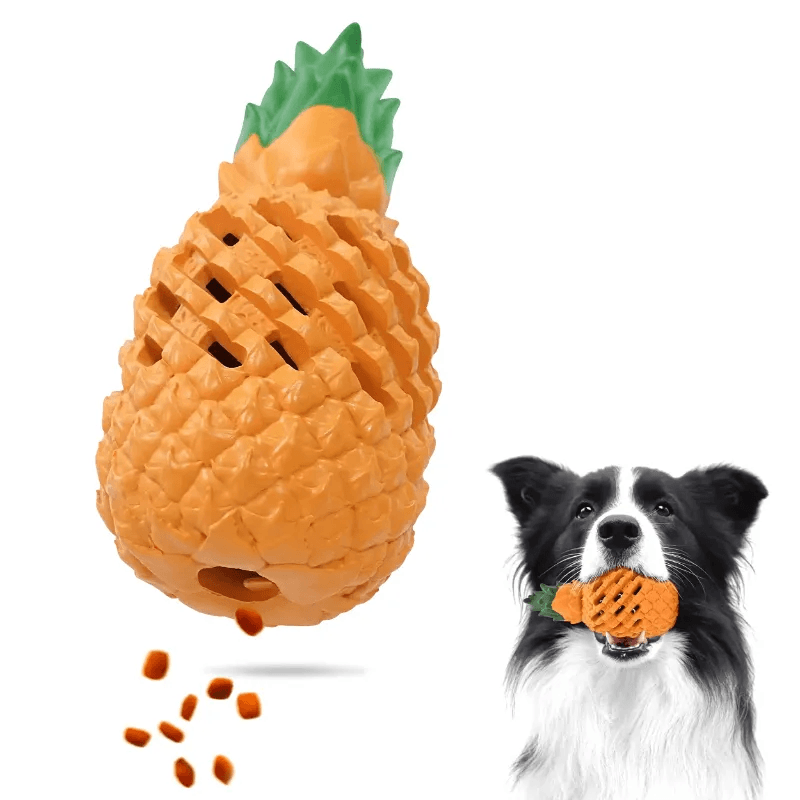
Potential Risks Associated with Chewing and How to Mitigate Them
| Potential Risks | Description | Mitigation |
| Choking Hazard | Dogs may break off large pieces of their dog chew toys or bones, which could become lodged in their throat and pose a choking hazard. | - Supervise your dog while chewing
- Choose appropriate-sized chews - Inspect dog chew toys regularly - Provide safety chews |
| Dental Damage | Chewing on hard objects like rocks or excessively hard toys can lead to tooth fractures, chips, or wear. | - Provide dental health-promoting toys
- Avoid hard items like antlers or nylon bones - Regular dental check-ups |
| Allergic Reactions | Some dogs may have allergies or sensitivities to certain ingredients in chew treats, which can lead to allergic reactions or gastrointestinal upset. | - Read ingredient labels carefully
- Introduce new treats gradually - Monitor for adverse reactions - Consult with a veterinarian for allergies or intolerances |
| Behavioral Issues | Excessive chewing or destructive behavior can indicate underlying issues such as anxiety, boredom, or lack of appropriate mental stimulation. | - Provide physical and mental exercise
- Rotate dog chew toys regularly - Use positive reinforcement training - Address underlying causes of anxiety or boredom |
| Contamination | Chews and treats can become contaminated with bacteria, mold, or other pathogens, posing a risk of foodborne illness. | - Purchase chews and dog chew toys from reputable manufacturers
- Store chews properly - Discard expired or moldy products - Practice good hygiene |
Choosing the right Chews for Your Dog
1. Consider Your Dog's Size and Breed: Different breeds and sizes of dogs have different chewing strengths and preferences.
2. Check for Safety: Ensure that the dog chew toy is safe to use. Avoid chews with small parts that could be swallowed or chews that are too hard and could damage your dog's teeth.
3. Choose Age-Appropriate Chews: Your dog's age should be considered when buying new dog chew toys. Puppies may require softer chews to help with teething, while adult dogs may enjoy more durable options.
4. Dog's Chewing Habits: Some dogs are aggressive chewers and may require more robust chews to satisfy their chewing needs. Others may prefer softer or more interactive dog-chewing toys and treats.
5. Look for Dental Benefits: Buy chews that promote dental health by helping to clean your dog's teeth and gums. Dental chews and dog chew toys with ridges or textures can help remove plaque and tartar buildup.
6. Avoid Allergens: If your dog has food allergies or sensitivities, be mindful of the ingredients in the chews you choose. Look for hypoallergenic options or chews made from alternative ingredients.
7. Chew Duration: Consider how long you want the treats and dog chew toys to last. Some chews are designed for short-term entertainment, while others are long-lasting and durable.
8. Consult with Your Veterinarian: If you're unsure which chews or dog chew toys are best for your dog, consult your veterinarian. They can offer personalized recommendations based on your dog's age, size, health, and chewing habits.
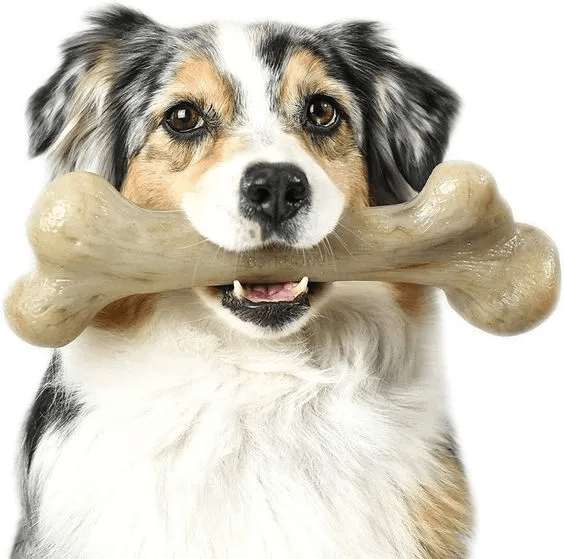
Training and Supervising Process for Chewing Behavior
Step 1: Start Early
When you bring your furry friend home, start training and supervising their chewing behavior. Puppies adjust to their environment with their mouths, so it's important to establish good chewing habits from the start.
Step 2: Provide Appropriate Chew Toys
Give your dog a variety of safe and suitable dog chew toys. Select toys designed for their size, breed, and chewing strength. Ensure the toys are durable and made from materials that won't splinter or break apart easily.
Step 3: Supervise Chewing Sessions
Always supervise your dog during chewing sessions, especially in the early stages of training. Watch to ensure your dog is using the chew toys appropriately and not engaging in destructive chewing behavior.
Step 4: Redirect Inappropriate Chewing
If you catch your dog chewing on something, it shouldn't calmly redirect its attention to an appropriate chew toy. Instead, offer praise and reward it when it chews on the toy.
Step 5: Rotate Chew Toys
Keep your dog interested in their chew toys by rotating them regularly. Introduce new toys and remove old ones to prevent boredom and encourage exploration.
Step 6: Set Boundaries
Establish boundaries for chewing behavior by confining your dog to certain areas of the house or using baby gates to block off rooms. This helps prevent access to forbidden items and reduces the risk of destructive chewing.
Step 7: Provide Mental and Physical Stimulation
Ensure your dog gets plenty of mental and physical exercise to prevent boredom and anxiety, which can lead to destructive chewing. Interactive play, daily walks, and puzzle toys are great ways to stimulate and engage your dog.
Step 8: Be Patient and Consistent
Chewing behavior doesn't change overnight, so be patient and consistent with your training efforts. Set realistic expectations and be prepared to reinforce good behavior over time.
Step 9: Seek Professional Help if Needed
If your dog continues to chew destructively despite your efforts, consider seeking guidance from a professional dog trainer or behaviorist. They can provide personalized advice and strategies to address specific chewing issues.
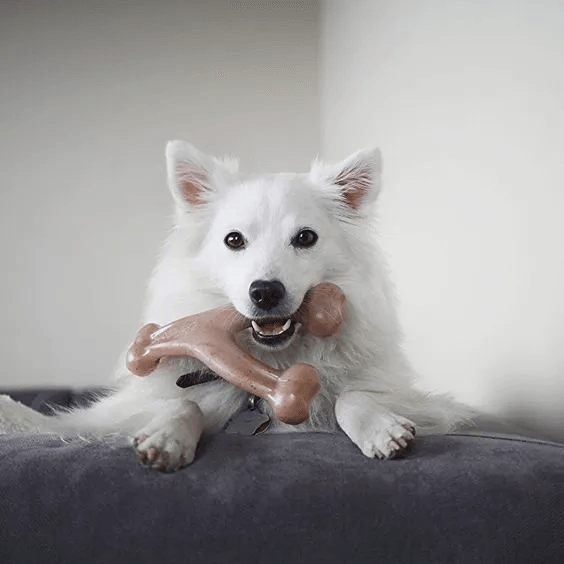
5 Common Myths About Dogs and Chewing
1. Myth: Dogs Chew to Seek Revenge
Debunking: Chewing is a natural behavior for dogs driven by instincts and needs such as teething, dental health, stress relief, and mental stimulation. It is essential to understand the reasons behind your dog's chewing behavior and address them appropriately through training and supervision.
2. Myth: Providing More Toys Will Stop Destructive Chewing
Debunking: While offering a variety of chew toys is essential, simply providing more toys may not stop destructive chewing behavior. Dogs may still chew out of boredom, stress, or habit. Supervision, redirection, and addressing underlying issues are crucial.
3. Myth: Chewing is Only a Puppy Behavior
Debunking: While chewing is more common in puppies due to teething and exploration, it is not limited to young dogs. Dogs of all ages may engage in chewing behavior for various reasons, including dental health maintenance, stress relief, and boredom. To prevent destructive behavior, you must continue supervising and managing your dog's chewing habits throughout their life.
4. Myth: Dogs Chew Because They're Hungry
Debunking: Dogs may chew on objects or furniture out of boredom, stress, or anxiety, but it's not necessarily because they're hungry. A balanced diet and regular meals can help prevent excessive chewing due to hunger, but it's essential to address the underlying reasons behind your dog's chewing behavior through training, enrichment, and mental stimulation.
5. Myth: Punishment is an Effective Way to Stop Chewing
Debunking: Punishing dogs for chewing can worsen their behavior, leading to fear and aggression. It's more effective to use positive reinforcement, such as providing appropriate chew toys and rewarding good behavior, combined with patience and consistency.
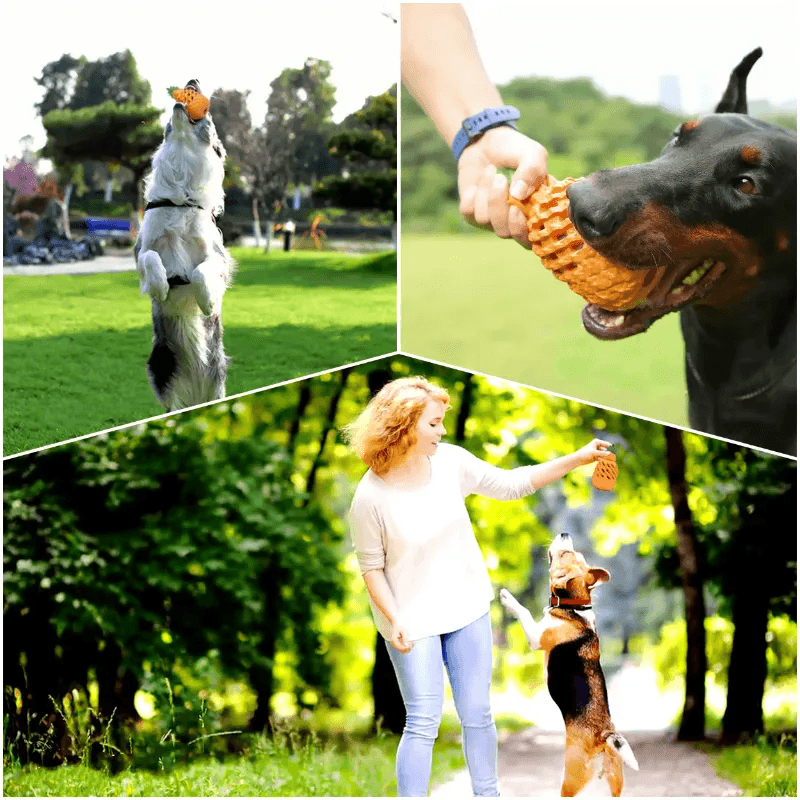
Conclusion
We have already discussed many reasons why chewing is so vital for our dogs, not only for the fun side but for the house and their mental health. With this activity, they keep their teeth fit and healthy and their mind busy and entertained. Lastly, it funnels their inborn talent to protect their shoes and furniture from harm. Therefore, as dog owners, your job is to ensure your furry friends have that good choice, so they can always have a smile on their faces.
And now let's answer the question: "How do we keep our furry friends fit?" Well, the core of it has to do with periodical chewing. Consider the mix of orally attractive dog chew toys like rubber bones, chewing treats, and maybe even a few interactive puzzle games. And don't leave out daily play and exercise sessions, where you will see their tails wagging in full swing. Whether setting up regular playdates or splurging on quality chew toys, every little bit counts towards their wag-filled, happy lives. Let's ensure our furry friends have a blast, stay healthy, and chew their way to endless happiness.
